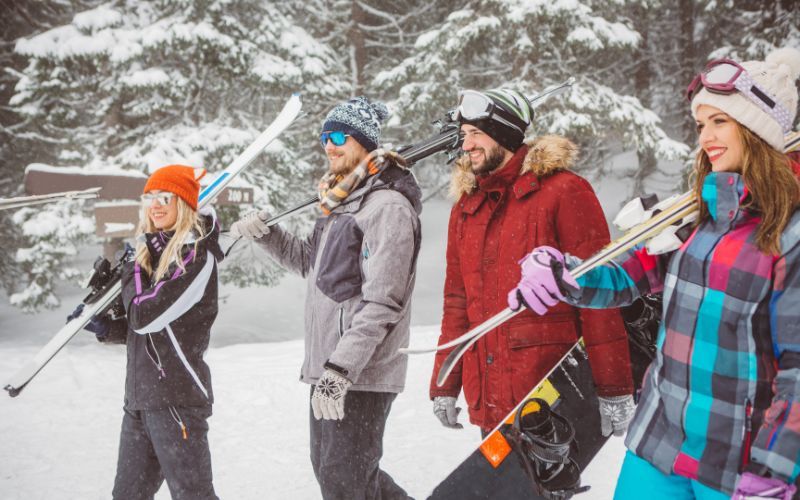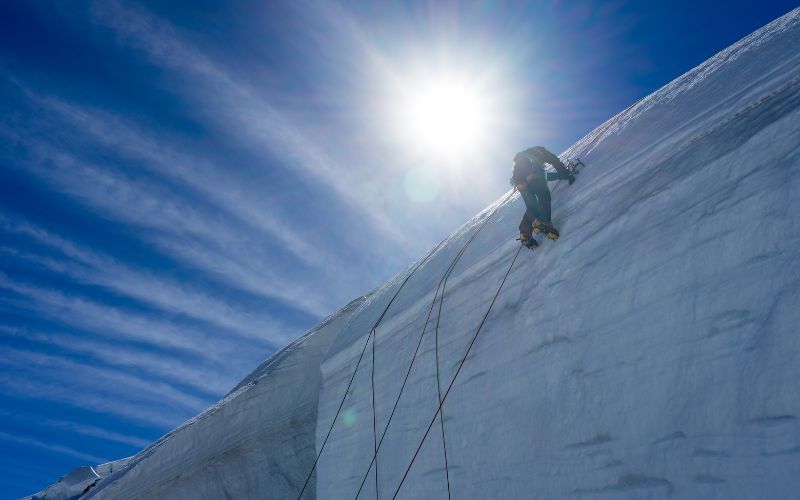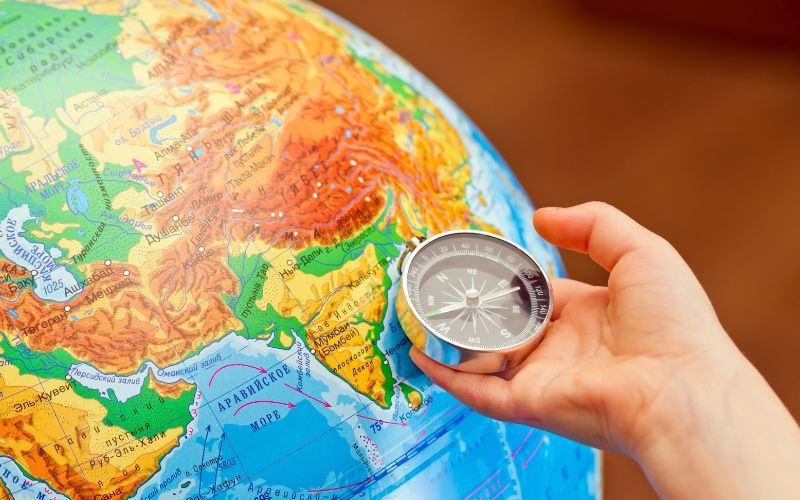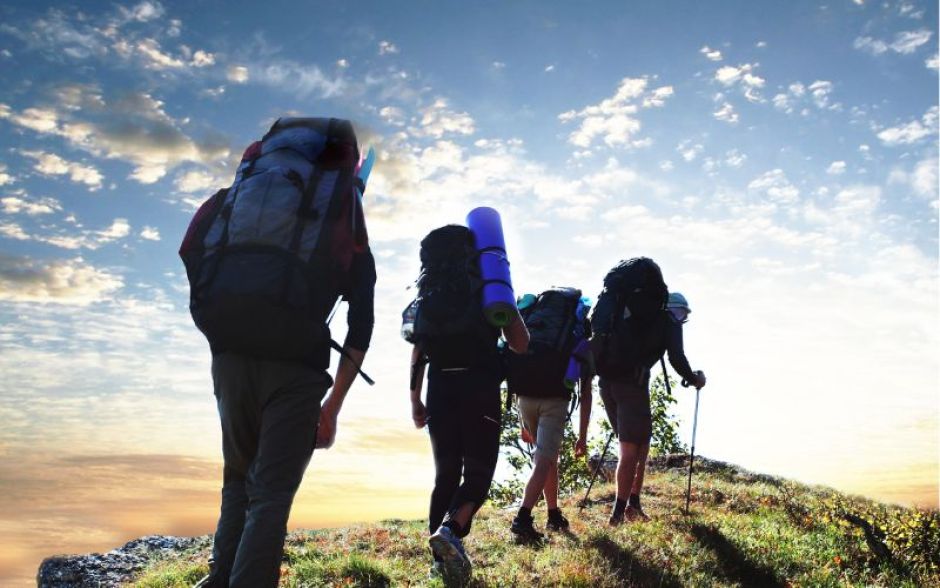
Backpacking 101 From Novice to Pro Super Guide 2023
Diving into the world of Backpacking 101: From Novice to Pro can be both exhilarating and overwhelming. Whether you’re stepping onto a trail for the first time or seeking to hone your skills for more challenging terrains, this guide is crafted to equip, inspire, and enlighten. From selecting the right gear to understanding the ethics of backpacking, let’s embark on a journey to discover the wonders of the wilderness and the art of trekking responsibly. Welcome to a world where every step brings new adventures and learnings.
Table of Contents – Backpacking 101
Introduction to Backpacking – Backpacking 101
Stepping into the world of Backpacking 101: From Novice to Pro is akin to unlocking a new dimension of adventure, self-discovery, and connection to the natural world. While the concept of backpacking might seem straightforward – packing essentials in a bag and heading off into the wilderness – the nuances, thrill, and skills required elevate it to an art form.

Backpacking offers a unique blend of solitude, simplicity, and challenge. Unlike day hiking, where you return to the comforts of civilization at sunset, backpacking immerses you in nature, often requiring you to be self-sufficient for days or even weeks at a time. It’s an endeavor where preparation meets spontaneity, and physical strength harmonizes with mental resilience.
Diving into Backpacking 101: From Novice to Pro will equip you not just with the knowledge of gear and routes, but also with an understanding of the mindset and ethos of a backpacker. Whether you’re dreaming of alpine landscapes, dense forests, or vast deserts, the world of backpacking welcomes all with the promise of wonder and the spirit of exploration. So, lace up your boots, and let’s embark on this enlightening journey together.
Selecting the Right Gear – Backpacking 101
Diving deeper into Backpacking 101: From Novice to Pro, one quickly realizes that the right gear is more than just equipment; it’s a trusted companion on every journey. Selecting appropriate gear is paramount not just for comfort, but also for safety and efficiency during your adventures.

1. Backpack: Your primary vessel. Consider volume (measured in liters), fit, and support. For weekend trips, a 40-50L pack is often sufficient. Extended trips may require 60L or more. A professional fitting can ensure your pack distributes weight effectively and minimizes strain.
2. Shelter: Tents, tarps, or hammocks? Your choice depends on the environment, weather conditions, and personal preference. Remember, it’s not just about weight but also durability and ease of setup.
3. Sleeping System: This encompasses your sleeping bag and sleeping pad. Look for temperature ratings that match your destination’s coldest nights. Sleeping pads are crucial for insulation and comfort, with options ranging from foam to inflatable.
4. Footwear: Possibly the most personal choice. Whether you prefer hiking boots or trail runners, ensure they are broken in, waterproof, and offer good traction and support.
5. Cooking Equipment: A lightweight stove, fuel, and a pot can suffice for basic needs. For those looking to elevate their trail meals, there are myriad cooking systems available.
6. Clothing: Think layers. A moisture-wicking base layer, insulating mid-layer, and a waterproof/windproof outer layer are staples. Always pack a hat and quality socks!
7. Miscellaneous Essentials: This includes a multi-tool, first-aid kit, water purification system, and navigation tools. Each item might seem small, but collectively, they ensure a safe and enjoyable trip.
In the realm of Backpacking 101: From Novice to Pro, it’s vital to remember that the “best” gear isn’t necessarily the most expensive or the lightest. It’s the gear that suits your specific needs, environment, and level of experience. As you gain experience, you’ll refine your choices, optimizing for your unique backpacking style.
Packing Techniques and Organization – Backpacking 101
Journeying further into Backpacking 101: From Novice to Pro, we encounter the art of packing. While having the right gear is essential, knowing how to pack it efficiently can make the difference between a cumbersome trek and a streamlined adventure.

1. Weight Distribution: For stability and comfort, your backpack’s center of gravity should be close to your back and situated between your shoulder blades. Heavy items like food and cooking gear should be centralized, while lighter items fill the top and bottom.
2. Compartmentalize with Bags: Use stuff sacks or zip-lock bags to organize similar items. For instance, have a designated bag for toiletries, another for cooking equipment, and another for clothing.
3. Roll, Don’t Fold: Rolling clothing can save space and reduces creasing. For added efficiency, consider compression sacks, which can significantly reduce the volume of soft items like sleeping bags and clothes.
4. Accessibility: Items needed frequently or urgently, like rain gear, first-aid kits, snacks, and water, should be easily reachable. Utilize side pockets and the top lid compartment for these essentials.
5. Waterproofing: Regardless of the forecast, be prepared for unexpected rain. Use a rain cover for your backpack and consider lining the interior with a trash compactor bag to keep contents dry.
6. External Attachments: While it’s best to keep most gear inside the pack to reduce snagging and imbalance, some items like trekking poles, sleeping pads, or tent poles might attach externally. Ensure they’re secured tightly to prevent loss or damage.
7. Test and Adjust: Before heading out on your adventure, wear your fully packed backpack around your home or neighborhood. This gives you a feel for the weight distribution and allows you to make any necessary adjustments.
Embarking on the path of Backpacking 101: From Novice to Pro means mastering the balance between packing what you need and minimizing excess. An organized pack not only makes your hike more comfortable but ensures that you can quickly access essentials, adapt to changing conditions, and truly enjoy the beauty that surrounds you.
Navigating and Map Reading Skills – Backpacking 101
Navigating through the wilderness is a cornerstone of the Backpacking 101: From Novice to Pro experience. The ability to correctly interpret maps and use navigation tools can mean the difference between a thrilling adventure and a potentially dangerous misadventure.

1. Understanding Map Basics: Familiarize yourself with the key elements:
- Scale: Indicates the ratio of a distance on the map to the actual distance on the ground. Typically, a smaller scale (like 1:100,000) shows more area with less detail, while a larger scale (like 1:24,000) offers more detail over a smaller area.
- Contour Lines: These show the elevation and shape of the terrain. Closely spaced lines represent steep areas, while wider gaps signify flatter terrains.
- Legend: This key decodes symbols used on the map, helping you identify features like water sources, campgrounds, and trailheads.
2. Compass Mastery: While digital tools are handy, a traditional compass doesn’t rely on batteries and can be a lifesaver.
- True North vs. Magnetic North: Maps align with true north, but a compass points to magnetic north. Understand the difference and how to adjust for declination (the angle between them).
- Orienting the Map: Lay your map flat and use your compass to align the map’s north with magnetic north.
3. Using GPS Devices and Apps: Modern backpackers often utilize GPS devices or smartphone apps. While they’re convenient, always have a traditional map and compass as a backup. Ensure you know how to operate your chosen tool, and keep it charged or carry spare batteries.
4. Landmark and Terrain Association: This involves correlating what you see on the map with what’s in front of you. Recognizing landmarks, such as peaks, rivers, or man-made structures, can help you confirm your location.
5. Planning and Route Marking: Before setting out, study your intended route. Mark key points, water sources, and potential camp sites. This aids in keeping you on track and allows you to estimate travel times between points.
6. Night Navigation: While it’s best to avoid traveling after dark, understanding basic night navigation techniques using stars or the moon can be beneficial in emergencies.
In the Backpacking 101: From Novice to Pro journey, being adept in navigation isn’t just about finding your way. It’s about understanding the land you’re traversing, making informed decisions, and ensuring the safety and success of your adventure. Remember, nature is unpredictable, so always be prepared and continually hone your navigation skills.
Cooking and Nutrition in the Backcountry – Backpacking 101
One of the joys of delving into Backpacking 101: From Novice to Pro is the experience of cooking amidst nature’s grandeur. Yet, ensuring proper nutrition while backpacking is more than just a delightful campfire meal; it’s about maintaining energy, stamina, and overall well-being throughout the journey.
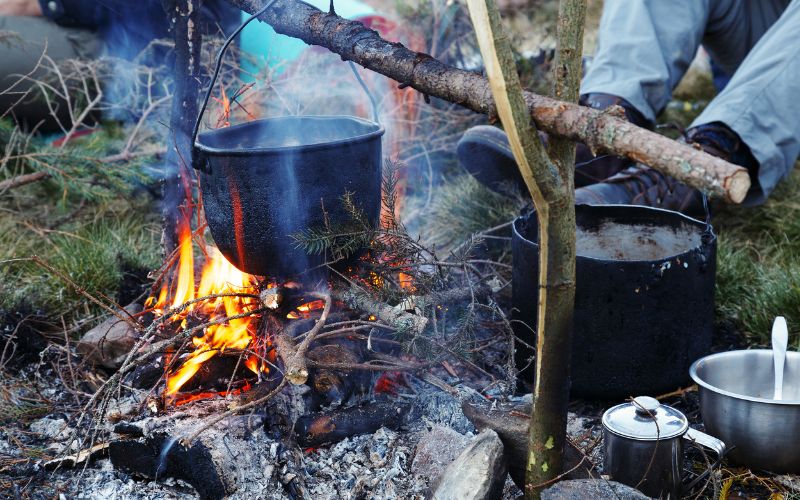
1. Caloric Needs: Backpacking is physically demanding. Depending on factors like trail difficulty, weight carried, and personal metabolism, you might need anywhere from 2,500 to 5,000 calories per day. Plan meals and snacks accordingly.
2. Balanced Nutrition: Aim for a mix of carbohydrates (for quick energy), proteins (for muscle repair), and fats (for long-lasting fuel). Foods like nuts, seeds, dried fruits, whole grains, and jerky can provide a good balance.
3. Dehydrated Meals: These are popular among backpackers due to their lightweight nature and ease of preparation. Simply add hot water and wait a few minutes. They come in various flavors and nutritional profiles, catering to different tastes and dietary needs.
4. Cooking Systems: Depending on your preference, you can opt for:
- Canister stoves: Lightweight and easy to use, great for boiling water quickly.
- Liquid fuel stoves: Suitable for colder temperatures and high altitudes.
- Wood or tablet stoves: Don’t require carrying fuel but depend on available resources or fuel tablets.
5. Water is Crucial: Hydration is key. Ensure you have a reliable method for water purification, be it a filter, purification tablets, or boiling. Always map out water sources and plan your daily intake.
6. Leave No Trace Cooking: Part of the Backpacking 101: From Novice to Pro ethos is respect for the environment. Use biodegradable soap for cleaning, avoid cooking near water sources to prevent contamination, and pack out all trash, including food scraps.
7. Efficient Packing: Group meals and kitchen gear in a dedicated stuff sack. Keep snacks accessible for on-the-go energy. And remember, repackage foods from bulky containers into zip-lock bags to save space and weight.
8. Special Dietary Needs: If you have allergies, dietary restrictions, or particular nutrition goals, planning is even more crucial. Fortunately, many brands cater to gluten-free, vegan, or paleo diets, ensuring everyone can enjoy tasty and nutritious meals on the trail.
Mastering cooking and nutrition in the backcountry is an essential component of Backpacking 101: From Novice to Pro. Not only does it fuel your physical endeavors, but a satisfying meal amidst nature’s serenity can also be a soul-nourishing experience. Bon appétit on the trail!!!
Dealing with the Elements – Backpacking 101
A crucial chapter in Backpacking 101: From Novice to Pro is learning how to adapt to, and respect, the unpredictable forces of nature. The elements can be both a wondrous part of the outdoor experience and a formidable challenge, demanding preparation and wisdom.
1. Sun Protection:
- The sun’s rays can be more intense at higher altitudes and when reflecting off surfaces like snow or water. Always apply a high-SPF sunscreen, wear a wide-brimmed hat, and consider clothing with built-in UV protection.
- Sunglasses with UV protection are vital, especially in snowy areas where the risk of snow blindness is high.
2. Rain and Wet Conditions:
- Waterproof gear is a must. This includes rain jackets, pants, and pack covers. Opt for “breathable” waterproof materials to prevent excessive sweating.
- Wet conditions can lead to hypothermia, even in warmer temperatures. Always change into dry clothes at camp and ensure your sleeping gear remains dry.
3. Cold and Snow:
- Layering is key. Start with moisture-wicking base layers, add insulating mid-layers (like fleece or down), and finish with a waterproof and windproof outer layer.
- Be wary of frostbite. Cover extremities and recognize the signs, such as numbness or pale skin.
- Gaiters can prevent snow from entering your boots, and microspikes or crampons can improve traction on icy trails.
4. Heat and Hydration:
- In hot conditions, it’s easy to become dehydrated. Drink water regularly, even if you’re not feeling thirsty. Electrolyte supplements can help replace lost salts.
- Lightweight, light-colored clothing can reflect the sun, and moisture-wicking fabrics can help with perspiration. Take breaks during peak heat and seek shade when possible.
5. Wind Protection:
- Wind not only magnifies cold conditions but can also lead to dehydration. Windproof outer layers and lip balms can help combat its effects.
- When setting up camp, look for natural wind barriers or use your tent’s wind-resistant features.
6. Altitude Awareness:
- Ascending too quickly can result in altitude sickness. Recognize the symptoms, like headaches, nausea, or dizziness. Ascend slowly, and consider medications or remedies if you’re prone to sickness.
7. River and Water Crossings:
- Always treat water crossings with caution. Assess the depth and current, unbuckle your backpack’s hip belt (so you can discard it if necessary), and use trekking poles for stability.
Embracing the elements is an intrinsic part of the Backpacking 101: From Novice to Pro experience. While nature can be unpredictable, with knowledge and the right gear, you can comfortably and safely navigate through diverse conditions, enriching your backpacking adventures.
Health, Safety, and First-Aid Tips – Backpacking 101
Ensuring personal health and safety is paramount in any backpacking journey, from the shortest trips to extensive expeditions. As you progress through Backpacking 101: From Novice to Pro, understanding how to handle medical and safety scenarios becomes essential.
1. First-Aid Kit Essentials:
- Always carry a comprehensive first-aid kit. It should include antiseptics, bandages, tweezers, pain relievers, blister treatments, allergy medications, and any personal prescriptions.
- Regularly check and replenish your kit, ensuring medications haven’t expired.
2. Stay Hydrated:
- Dehydration can lead to a slew of health issues, from dizziness to kidney problems. Drink water consistently and be aware of the signs of dehydration, such as dark urine or extreme fatigue.
3. Recognize Symptoms of Altitude Sickness:
- Symptoms might include nausea, fatigue, headache, and dizziness. If they occur, descend to a lower altitude and rest. Hydration and certain medications can also help.
4. Avoid Hypothermia and Hyperthermia:
- Hypothermia occurs in cold conditions when the body loses heat faster than it can produce it. Wear appropriate clothing, stay dry, and eat energy-rich foods.
- Hyperthermia, or heat-related illness, is the opposite. In hot conditions, wear breathable, light-colored clothing, drink lots of fluids, and rest in the shade.
5. Safe Water Consumption:
- Drinking untreated water can expose you to pathogens. Always treat water from natural sources using filters, purifying tablets, or boiling.
6. Tick and Insect Protection:
- In areas known for ticks or mosquitoes, use insect repellent, wear long sleeves, and regularly check your body for ticks. Some diseases transmitted by these pests can be severe.
7. Know Basic CPR and First Aid:
- Before embarking on any backpacking adventure, consider taking a first aid and CPR class. Being knowledgeable can make a critical difference in emergencies.
8. Communication and Emergency Devices:
- Always inform someone of your itinerary and expected return. Consider carrying emergency devices like a whistle, signal mirror, and even a Personal Locator Beacon (PLB) or satellite communicator in remote areas.
9. Be Cautious with Campfires:
- Only start fires in designated areas or where permitted. Ensure the fire is completely out before leaving or sleeping. Always practice fire safety.
10. Wildlife Encounters:
- Research the wildlife in your backpacking region. Understand how to store food to avoid attracting animals and what to do in encounters with potentially dangerous animals.
Treading the path of Backpacking 101: From Novice to Pro requires a blend of adventure spirit and safety consciousness. The wilderness can be unpredictable, but with preparation and knowledge, you can ensure your experiences are both exhilarating and safe.
Ethics of Backpacking: Leave No Trace and Respect for Nature – Backpacking 101
The joy and privilege of exploring the backcountry come with a responsibility. Backpacking 101: From Novice to Pro not only emphasizes the skills and gear required but also underscores the importance of ethical backpacking, primarily centered on the Leave No Trace (LNT) principles and a profound respect for nature.
1. Plan Ahead and Prepare:
- Know the regulations and special concerns of the area you’re visiting. Proper planning prevents unexpected situations that might lead to LNT violations, such as trampling on delicate vegetation because of a lack of campsite.
2. Camp and Travel on Durable Surfaces:
- Use established trails and campsites. In more remote areas, camp at least 200 feet away from lakes and streams to protect riparian areas.
3. Dispose of Waste Properly:
- “Pack it in, pack it out.” This age-old adage means everything you bring in, you must take out—including all trash, leftover food, and litter.
- For human waste, use established restroom facilities or dig a cat hole 6-8 inches deep at least 200 feet from water sources.
4. Leave What You Find:
- Preserve the past and protect the future. Avoid picking plants, disturbing wildlife, or removing cultural or historic structures and artifacts.
5. Minimize Campfire Impact:
- Campfires can cause lasting damage. Use a lightweight camping stove for cooking and a lantern for light. If you must have a fire, use established fire rings, keep fires small, and burn only small sticks and twigs.
6. Respect Wildlife:
- Observe from a distance. Never feed animals as it can damage their health, alter natural behaviors, and expose them to predators or other dangers.
7. Be Considerate of Other Visitors:
- Keep noise levels down, yield the trail to others, and maintain a friendly demeanor. Remember, everyone is out to enjoy nature.
8. Travel and Camp in Small Groups:
- Large groups tend to have a bigger impact on the environment and can also detract from the wilderness experience for others.
9. Avoid Introducing Non-Native Species:
- Ensure your gear, clothing, and footwear are free from seeds or species that might be transferred to a new environment, potentially harming the ecosystem.
10. Share Your Knowledge:
- As you advance in Backpacking 101: From Novice to Pro, share the LNT principles and ethical backpacking practices with newcomers. The more informed the backpacking community is, the better preserved our natural spaces will be for future generations.
Embarking on the Backpacking 101: From Novice to Pro journey is as much about nurturing the spirit of adventure as it is about upholding the sanctity of nature. By practicing these ethics, you ensure that the trails you love remain unspoiled for you, others, and generations to come.
Conclusion – Backpacking 101
Backpacking 101: From Novice to Pro is more than just a journey through rugged terrains and untouched landscapes; it’s a voyage of self-discovery, personal growth, and becoming one with nature. Whether you’re lacing up your boots for the first time or have clocked countless miles on backcountry trails, there’s always something new to learn, experience, and cherish.
Responsible backpacking is the linchpin that ensures these wondrous places remain pristine for future adventurers. The tools, skills, and ethics discussed in this guide form the foundation of a successful and fulfilling backpacking experience. By adhering to the principles and practices outlined, not only do you enhance your own adventures, but you also contribute to the larger backpacking community and the natural world.
In essence, Backpacking 101: From Novice to Pro is about understanding that the beauty of the journey lies in the balance between adventure and responsibility. May your trails be winding, challenging, and lead you to the most picturesque peaks and views, and may you always tread lightly, with respect for the magnificent world around you. Safe travels and happy backpacking!
You might also like:
Popular Stories
Newsletter
About me
Meet Dennis, an enthusiast of the great outdoors. For the past 15 years, he’s maintained a daily routine that includes running, hiking, and hitting the gym, embodying a commitment to an active and healthy lifestyle.
Dennis is a true advocate for the joy and rejuvenation that outdoor living can bring.

